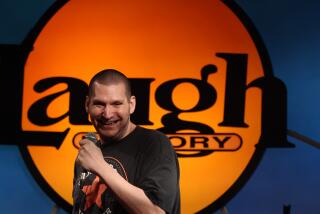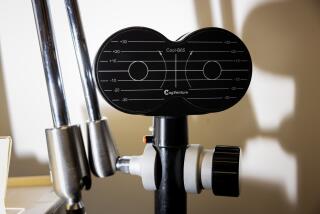To Gift of Hope, Add a Bonus: Love
A colleague dropped by my office last week for a sobering conversation--one I’ve become sadly accustomed to having in the three years since my 5-year-old son Frankie was diagnosed as having infantile autism.
My colleague once worked as a correspondent in London and had just heard from friends there who were devastated at having received a similar diagnosis for their 2-year-old boy. Would I be willing to talk with his friends to offer advice from my own experience, he asked. And what, precisely, is autism?
As always, I said yes to the former question and did my best to answer the latter: Autism is a neurological disorder, the third most common developmental disability among children, after mental retardation and cerebral palsy. The brains of people with autism are wired differently, so sensory stimuli (light, sound, touch) affect them differently. In most cases their reactions interfere with learning. In extreme cases they interfere with the ability to function normally in society.
I first wrote about Frankie’s autism two Christmas seasons ago with the same sense of fear and loss that my colleague’s friends in London must feel. A healthy, happy child who had developed normally for two years suddenly stopped speaking, withdrew from social contact and lapsed into increasingly bizarre behaviors.
It took the better part of a year for us to get a definitive diagnosis. And even then we were warned by some of the top specialists in the field that there is no cure for autism, and that Frankie would face lifelong challenges.
But in time we also learned from other parents with similar experiences--particularly a wonderful Los Angeles couple named John Shestack and Portia Iverson--that autism is treatable. Just as important, we learned that biomedical research, especially on how the brain can be taught to compensate for damage or slow development, is finding effective new treatments for autism and may eventually discover a cure.
That is why Frankie’s mother, Magdalena, and I now wage a two-front war against autism. On the public side we have tried to help the organization that Shestack and Iverson founded, Cure Autism Now, raise awareness of the need for more biomedical research into autism. On the personal side we have explored a variety of treatments that have been shown to help some children with autism, to determine whether they might be useful for Frankie.
He has so far responded well to auditory training, to help him learn to distinguish sounds more clearly; music therapy, which helps him exercise those parts of the brain that control conceptual thinking; and sensory integrated therapy, which has helped him coordinate his physical movements--climbing, jumping and even walking normally.
The core of our son’s treatment, a behavior modification program pioneered by Dr. Ivar Lovaas at UCLA, continues to be successful. For the last year and a half Frankie has spent 40 hours a week being tutored by Lovaas Institute therapists. They’ve taught him to count, spell, draw and respond appropriately to playmates and teachers.
He’s made such rapid progress that in September, the school district in which we live agreed to place him in a mainstream kindergarten classroom with 29 non-disabled children. There he is accompanied by a “shadow” therapist who intervenes when and if Frankie needs help. It’s an important experiment, for if children with autism can be mainstreamed, it will eventually reduce the cost of educating them, and perhaps even reduce their social isolation by getting them used to interacting with non-disabled peers.
Now we are exploring other treatments to help accelerate Frankie’s ability to learn by “rewiring” his young brain. His pediatrician, Ricki Robinson of La Canada, a CAN board member who specializes in treating children with autism, referred Frankie to a wonderful form of play therapy developed by Stanley Greenspan, a noted child psychiatrist. A therapist engages Frankie in games and other forms of play that help him develop and learn to express emotions like fear and joy.
In the long run, Greenspan’s “floor play” therapy may prove as fundamentally important to Frankie’s growth and development as the learning skills provided by his Lovaas therapists. One of the criticisms of Lovaas’ technique is that it is rote learning, which does not do enough to help an autistic child’s emotional development.
I’m not sure how valid that criticism is. Just the other day Frankie surprised us when one of his favorite Lovaas therapists was leaving after a tutoring session.
“Bye, bye, Danny,” Frankie said to the young man as he walked to our front door, adding after a brief pause, “I love you.”
How and where did Frankie begin to comprehend a concept like love? Did he react naturally to the closeness and affection he has come to feel for several of his Lovaas-trained therapists? Or was it the Greenspan therapy that drew it out? We probably won’t know the answer until Frankie, hopefully, can tell us more in his own words.
In the meantime, I’m less concerned about how that small but significant breakthrough occurred than that it did. For while I am more than ever convinced that successful treatment of autism is possible, I have also come to realize that it must be done in incremental steps, and with an open-minded approach to a variety of therapies.
I’m looking forward to the new surprises Frankie will have for me in 1998--and also to that phone call from London. It’s nice to finally offer not just advice but hope.
Frank del Olmo is assistant to the editor of The Times and a regular columnist.


